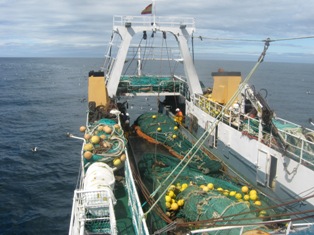4 de diciembre de 2023


Author——————————-
Claire van der Geest
Principal, Seven Seas Consulting
✉️
Harvest strategies improve fisheries management by setting the parameters and boundaries for stakeholder engagement in fisheries management from the outset. In the Western and Central Pacific Fisheries Commission (WCPFC), harvest strategies are being actively progressed through Conservation and Management Measure 2014-06 to develop and implement a harvest strategy approach for key fisheries and stocks in the Western and Central Pacific Ocean (WCPO) and specifically through the workplan pursuant to paragraph 13 of the CMM last updated in December 2022. To date, the Commission has agreed the target reference point and management procedure for skipjack, with target reference points for south Pacific Albacore, Yellowfin and Bigeye tunas being ‘noted’. WCPFC will consider some proposals to continue the development of, or refine the existing, harvest strategies for key target species, including for example Northern albacore in coordination with the Inter-American Tropical Tuna Commission adopted at its meeting in August.
Fisheries management is not rocket science, but it is complex, relying on its two wings; (i) the management measures themselves in combination with (ii) a robust monitoring program to independently verify implementation of the measures on the water. Underpinning both wings and essential to harvest strategy development is to use the best available science to develop the management measures that will be used to achieve the target reference point. These management measures might consist of input or output controls or a combination of both depending on the fishery. Equally essential is to have an effective monitoring program to provide independent and verified data about activities on the water.
Although possibly not the sexy side of fisheries management, the importance of effective fisheries monitoring programs cannot be understated. Monitoring provides essential information for fisheries management such as at sea activities, catch, effort, and location of effort. The data generated from effective monitoring programs is used to strengthen the science underpinning the stock assessment and management procedures, which is used to further refine the management measures, helping to ensure that they rebuild or maintain the stock at the target reference point agreed in a harvest strategy. Effective monitoring, using both on-water and land-based tools, drives the continual improvement cycle that is fisheries management. Robust monitoring also helps to ensure that managers and stakeholders are confident that the approach to managing the stock is working, or if it’s not that effective action can be taken to quickly ameliorate any stock decline.
However, the adoption and implementation of monitoring programs and tools can be highly controversial and political. For example, the use of electronic monitoring to collect independent and verified data of activities at sea, including the placement of cameras in the workplace, has been met with significant resistance despite the inability to meet the existing agreement to achieve a minimum of 5% observer coverage to achieve the same objective. The resistance to the uptake of electronic monitoring comes from all stakeholders. For industry the implementation of cameras in their workplace is seen as an invasion of their privacy, unnecessary and costly. While for governments there is the need to balance the differing stakeholder perspectives (industry and conservation) to ensure confidence in the fisheries management while also delivering cost effective programs, including balancing the upfront costs with the ongoing costs of the program delivery. Concurrently, there are a need to understand how to utilise technology development to continue to drive down program costs and provide robust and rigorous fisheries management.
Fisheries managers would be wise to remain open to considering how technological advancements can be used in monitoring programs. For example, the use of Artificial Intelligence, with further development, may one day be an important addition to fisheries monitoring. All avenues to gather more precise and fine-scale fisheries data is essential to ongoing refinement of harvest strategies. Similarly, the smart use of analytics combined with bigger data affords the opportunity to garner previously unseen patterns important to further understanding the fishery. This will continue to be particularly critical as we try to manage fisheries in a changing climate.

Essential to harvest strategies is to consider not only the data required from the monitoring program and the tools to achieve it, but also how the monitoring tools and programs coalesce provide an integrated monitoring program (see WCPFC Skipjack example below). Considering how a management procedure along with the specific management measures will be monitored through tools like EM is fundamental to ensuring the success of the overall harvest strategy and is critical to consider throughout the harvest strategy negotiations. It is essential that fisheries monitoring be considered in a wholistic way to ensure that it effectively supports the broader fisheries management program implemented through harvest strategies.
Case Example: WCPFC Skipjack
Annex III of WCPFC’s Skipjack Management Procedure sets out at a high level of the type of information required for the management procedure, for example annual catch estimates and standardised CPUE indices, and CMM 2021-01 sets out the management measures are being used to ensure that the target reference point is achieved on average. However, neither the management procedure nor CMM 2022-01 describe the monitoring programs used to independently monitor the implementation of the management measures themselves. Rather the existing monitoring programs, for example the Regional Observer Program, the VMS and electronic reporting, have been developed generally rather than specifically to deliver harvest strategies or being seen as part of an integrated monitoring program. Thankfully the Secretariat has prepared a very useful summary linking the data collection and monitoring currently in place to support harvest strategies (WCPFC20-2023-14-Rev1).